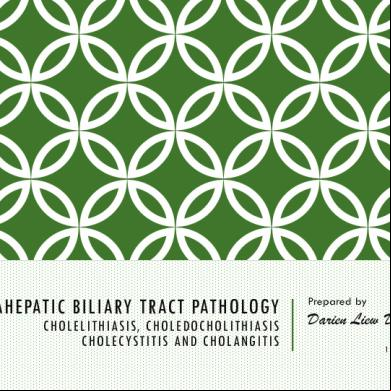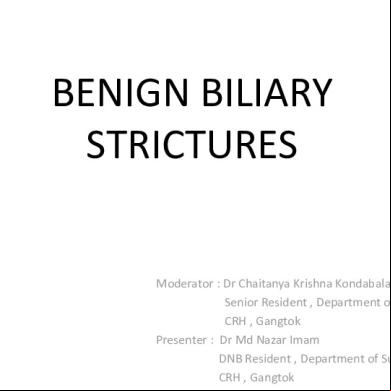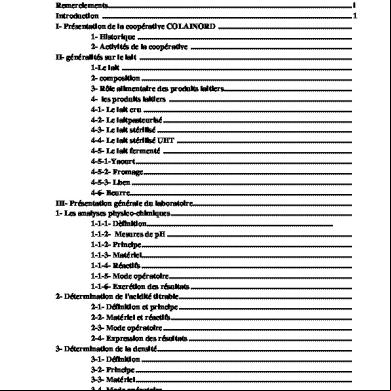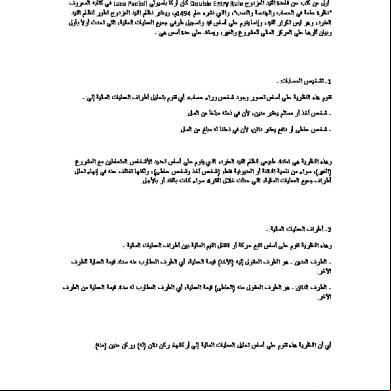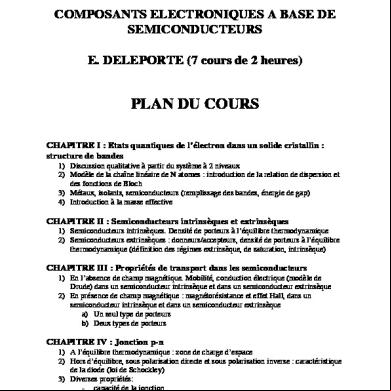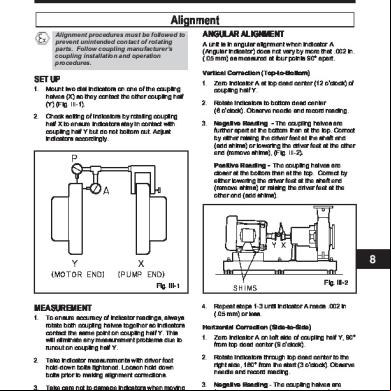Extrahepatic Biliary Obstruction 535v55
This document was ed by and they confirmed that they have the permission to share it. If you are author or own the copyright of this book, please report to us by using this report form. Report 2z6p3t
Overview 5o1f4z
& View Extrahepatic Biliary Obstruction as PDF for free.
More details 6z3438
- Words: 1,060
- Pages: 44
Extrahepatic Biliary Obstruction: Is Endoscopic Ultrasonography Mandatory Prior to ER?
Obstructive Jaundice One of the most common problem Serious condition
Thorough evaluation Treatment strategy depends on the specific etiology
ER has been considered gold standard for diagnosis and therapy of obstructive jaundice. Invasive procedure – – –
Complication in 5% of patients Mortality rate in 0.1- 0.2% Endoscopic sphinectrotoiy = 0.2- 2.2%.
Limitations: Visualization of indirect signs It is difficult to differentiate small stones from aerobilia.
Small stone in the dilated common bile duct may be missed. Difficult to visualized Biliary sludge and microlithiasis. Early ampullary tumor may be missed
What is the alternative procedure(s) to ER in evaluation of obstructive jaundice?
MR EUS
MR is completely non invasive procedure limited resolution (0.1 versus EUS 1.5 mm ) Difficult to diagnose stone <10mm Difficult to diagnose stone in the periampullary region.
An accurate diagnostic tool associated with lower morbidity and mortality rates was awaited, to replace ER and to reserve endoscopic sphinectrotoiy for patients with CBD stones.
EUS had provide as a gold standard in the exploration of extrahepatic obstruction due to it is low morbidity and it is accuracy.
Why EUS? The close a proximity between the probe and the pancreato-biliary region. Visualization of these hidden organs and pathology
High resolution.
Role of EUS in Choledocholithiasis Sensitivity EUS ER MR
: : :
(92% - 100%) (79% - 90%) (70% - 88%)
Negative predictive value EUS : ER :
(97% - 100%) (83% - 88%)
Detection of microlothiasis Associated pathology Vipul Rathod, et al VHGOE 2004
Performance of EUS in detection of choledocholithiasis Author Denis Amouyal Napoleon Salmeron Shim Palazzo Prat Norton Canto
No. Frequency of Sensitivity patients cholidocholithiasis 60 62 58 211 132 422 119 50 64
25 (42%) 32 (52%) 26 (45%) 133 (63%) 28 (21%) 152 (36%) 78 (66%) 24 (48%) 19 (30%)
92% 97 100 96 89 95 93 88 84
Specificity
Accuracy
100% 100 90 96 100 98 97 96 95
97% 98 95 96 97 96 95 92 92
Risk of presence of CBD stones in patients with suspected choledocholithiasis No associated clinical history
Low risk
2- 3%
Intermediate risk
20-50% Acute ascending cholengitis, pancreatitis
High risk
Acute ascending 50-80% cholengitis, jaundice
Normal
<7 mm
ALP< twice UPL
8-10 mm
ALP > twice UNL > 10 mm
Indication of EUS prior to ER in Choledocholithiasis Patients with low or moderate risk CBD stones, EUS is recommended before ER High risk patients? 1. 20- 50% (Risk of unnecessary sphinctrotomy ) 2. Associated pathology
Role of EUS in Choledocholithiasis Limitations Poor performance in the hepatic hilum?!!! Tracing of CBD with linear electronic echoendoscope
Difficulty in anatomical abnormalities? Scanning of CBD through body of stomach using linear electronic echoendoscope
Scanning of CBD through body of stomach in gastric outlet obstruction
87 Patients Risk of Choledocholithiasis: Low : 33 Intermediate : 20 High : 34 Clinical features, laboratory tests, CBD diameter on US EUS prior to ER
EUS Findings Normal
54(62%)
Follow up(1 yr)
CBD Stone
31(35%)
Stone Extraction
Cholengiocarcinoma
2(2.2%)
Stenting
CBD Stone + Cholengiocarcinoma
2(2.2%)
Stenting + Surgery
CBD Stone +
1(1.1%)
Ampullary tumor
Stenting + Surgery
Unnecessary (harmful) endoscopic sphinectrotomy were avoided in in 56/87 (64%) patients
Treatment strategy were altered in 5 (6%) patients (either associated pathology or different diagnosis)
45 years female Jaundice + right hypochondrial pain
US: Dilated CBD ER: Distal filling defect ~ Ampullarry tumor ?
EUS in Bile Duct Tumor Limitations of ER in evaluation of bile duct tumor Only indirect signs such as stenosis or prestenotic dilation , or both, are visualized, and lesion itself is generally not seen. Difficult to differentiate benign from malignant stricture. Low sensitivity of ER guided brush cytology (30-40%)
EUS in Bile Duct Tumor Can EUS overcome limitations of ER ? Direct visualization of tumor Criteria for malignancy of stricture: Disruption of normal echo-layer pattern of CBD wall Hypoechoic infiltrating lesion Irregular margins lesion Heterogeneous mass invading surrounding tissue
Local tumor staging EUS-FNA sensitivity (60-80%) Byrne et al;Endoscopy2004
EUS in Bile Duct Tumor Limitation of EUS in bile duct tumor!!!!! Klat skin tumor Electronic linear echoendoscope 5 MHz
57 years old Cholestatic jaundice Abdominal US : Merrizy syndrome? ER : CBD stone + hilar stricture
EUS in Bile Duct Tumor How to appropach a bile duct stricture Middle and distal bile duct strictures:
EUS plus FNA followed by ER. Common hepatic duct and hilar strictures:
MR or EUS ? followed by ER
45 years male Obstructive Jaundice US: Dilated CBD ER: Distal CBD Stricture?
60 years male Jaundice + Itching US: Dilated CBD ER: Mid CBD stone?
Role of EUS in Periampullary Tumor Diagnosis of tumor Tissue sampling. Staging Treatment strategy (Surgery Vs Endoscopic)
Role of EUS in Periampullary Tumor Limitations of ER: Diagnosis of ampullary tumor not always possible endocopically (intramural). Ampullary tumor Vs Odditis Coexistence of stone (6-38%)
Role of EUS in Periampullary Tumor Can EUS overcome limitations of ER ? Ampullary tumor Hypoechoic enlargement of ampulla Polypoid intraluminal mass Involvement of duodenal wall
Oditis: Hyperechoic enlargement of ampulla No intraductal polypoid infiltration Duodenal wall preserved Keriven et al;Endoscopy 1993
70 years female Cholestatic jaundice US: Dilated CBD + stone ER: CBD stone
Role of EUS in Periampullary Tumor EUS should be performed prior to ER in all patients: Obstructive jaundice with negative CT Scanning and MRI. Insertion of biliary stent prior to EUS may impede visualization of small tumor.
Accuracy of Different Modalities in The Evaluation of periampullary tumors Diagnostic modality
Accuracy
Abdominal US
65%
EUS
95 %
ER
81 %
MRI + MR
88 %
CT scanning
83 %
Clinical Approach To The Patient With Obstructive Jaundice US
Stone
Tumor
Unclear
EUS Associated pathology
EUS Staging
EUS Confirming diagnosis
Therapeutic decision Endoscopic therapy Stone extraction or Stenting
Surgery
Definitive or Palliative
EUS is useful prior to ER
Detection of microlithiasis and choledocholithiasis. Detection and staging of pancreatic and ampullary tumors. Evaluation of benign and malignant bile duct obstruction. Obtain tissue diagnosis of periampullary tumors.
Is it cost effective? Extra cost of EUS, performed as the first
investigation, is out weighted by the lower morbidity rate and shorter hospitalization because of minor number of unnecessary ER and/or sphincterotomy.
Conclusion EUS is necessary prior to ER in the evaluation of obstructive jaundice. Every endoscopist should be familiar with EUS EUS and ER in the same session.
Obstructive Jaundice One of the most common problem Serious condition
Thorough evaluation Treatment strategy depends on the specific etiology
ER has been considered gold standard for diagnosis and therapy of obstructive jaundice. Invasive procedure – – –
Complication in 5% of patients Mortality rate in 0.1- 0.2% Endoscopic sphinectrotoiy = 0.2- 2.2%.
Limitations: Visualization of indirect signs It is difficult to differentiate small stones from aerobilia.
Small stone in the dilated common bile duct may be missed. Difficult to visualized Biliary sludge and microlithiasis. Early ampullary tumor may be missed
What is the alternative procedure(s) to ER in evaluation of obstructive jaundice?
MR EUS
MR is completely non invasive procedure limited resolution (0.1 versus EUS 1.5 mm ) Difficult to diagnose stone <10mm Difficult to diagnose stone in the periampullary region.
An accurate diagnostic tool associated with lower morbidity and mortality rates was awaited, to replace ER and to reserve endoscopic sphinectrotoiy for patients with CBD stones.
EUS had provide as a gold standard in the exploration of extrahepatic obstruction due to it is low morbidity and it is accuracy.
Why EUS? The close a proximity between the probe and the pancreato-biliary region. Visualization of these hidden organs and pathology
High resolution.
Role of EUS in Choledocholithiasis Sensitivity EUS ER MR
: : :
(92% - 100%) (79% - 90%) (70% - 88%)
Negative predictive value EUS : ER :
(97% - 100%) (83% - 88%)
Detection of microlothiasis Associated pathology Vipul Rathod, et al VHGOE 2004
Performance of EUS in detection of choledocholithiasis Author Denis Amouyal Napoleon Salmeron Shim Palazzo Prat Norton Canto
No. Frequency of Sensitivity patients cholidocholithiasis 60 62 58 211 132 422 119 50 64
25 (42%) 32 (52%) 26 (45%) 133 (63%) 28 (21%) 152 (36%) 78 (66%) 24 (48%) 19 (30%)
92% 97 100 96 89 95 93 88 84
Specificity
Accuracy
100% 100 90 96 100 98 97 96 95
97% 98 95 96 97 96 95 92 92
Risk of presence of CBD stones in patients with suspected choledocholithiasis No associated clinical history
Low risk
2- 3%
Intermediate risk
20-50% Acute ascending cholengitis, pancreatitis
High risk
Acute ascending 50-80% cholengitis, jaundice
Normal
<7 mm
ALP< twice UPL
8-10 mm
ALP > twice UNL > 10 mm
Indication of EUS prior to ER in Choledocholithiasis Patients with low or moderate risk CBD stones, EUS is recommended before ER High risk patients? 1. 20- 50% (Risk of unnecessary sphinctrotomy ) 2. Associated pathology
Role of EUS in Choledocholithiasis Limitations Poor performance in the hepatic hilum?!!! Tracing of CBD with linear electronic echoendoscope
Difficulty in anatomical abnormalities? Scanning of CBD through body of stomach using linear electronic echoendoscope
Scanning of CBD through body of stomach in gastric outlet obstruction
87 Patients Risk of Choledocholithiasis: Low : 33 Intermediate : 20 High : 34 Clinical features, laboratory tests, CBD diameter on US EUS prior to ER
EUS Findings Normal
54(62%)
Follow up(1 yr)
CBD Stone
31(35%)
Stone Extraction
Cholengiocarcinoma
2(2.2%)
Stenting
CBD Stone + Cholengiocarcinoma
2(2.2%)
Stenting + Surgery
CBD Stone +
1(1.1%)
Ampullary tumor
Stenting + Surgery
Unnecessary (harmful) endoscopic sphinectrotomy were avoided in in 56/87 (64%) patients
Treatment strategy were altered in 5 (6%) patients (either associated pathology or different diagnosis)
45 years female Jaundice + right hypochondrial pain
US: Dilated CBD ER: Distal filling defect ~ Ampullarry tumor ?
EUS in Bile Duct Tumor Limitations of ER in evaluation of bile duct tumor Only indirect signs such as stenosis or prestenotic dilation , or both, are visualized, and lesion itself is generally not seen. Difficult to differentiate benign from malignant stricture. Low sensitivity of ER guided brush cytology (30-40%)
EUS in Bile Duct Tumor Can EUS overcome limitations of ER ? Direct visualization of tumor Criteria for malignancy of stricture: Disruption of normal echo-layer pattern of CBD wall Hypoechoic infiltrating lesion Irregular margins lesion Heterogeneous mass invading surrounding tissue
Local tumor staging EUS-FNA sensitivity (60-80%) Byrne et al;Endoscopy2004
EUS in Bile Duct Tumor Limitation of EUS in bile duct tumor!!!!! Klat skin tumor Electronic linear echoendoscope 5 MHz
57 years old Cholestatic jaundice Abdominal US : Merrizy syndrome? ER : CBD stone + hilar stricture
EUS in Bile Duct Tumor How to appropach a bile duct stricture Middle and distal bile duct strictures:
EUS plus FNA followed by ER. Common hepatic duct and hilar strictures:
MR or EUS ? followed by ER
45 years male Obstructive Jaundice US: Dilated CBD ER: Distal CBD Stricture?
60 years male Jaundice + Itching US: Dilated CBD ER: Mid CBD stone?
Role of EUS in Periampullary Tumor Diagnosis of tumor Tissue sampling. Staging Treatment strategy (Surgery Vs Endoscopic)
Role of EUS in Periampullary Tumor Limitations of ER: Diagnosis of ampullary tumor not always possible endocopically (intramural). Ampullary tumor Vs Odditis Coexistence of stone (6-38%)
Role of EUS in Periampullary Tumor Can EUS overcome limitations of ER ? Ampullary tumor Hypoechoic enlargement of ampulla Polypoid intraluminal mass Involvement of duodenal wall
Oditis: Hyperechoic enlargement of ampulla No intraductal polypoid infiltration Duodenal wall preserved Keriven et al;Endoscopy 1993
70 years female Cholestatic jaundice US: Dilated CBD + stone ER: CBD stone
Role of EUS in Periampullary Tumor EUS should be performed prior to ER in all patients: Obstructive jaundice with negative CT Scanning and MRI. Insertion of biliary stent prior to EUS may impede visualization of small tumor.
Accuracy of Different Modalities in The Evaluation of periampullary tumors Diagnostic modality
Accuracy
Abdominal US
65%
EUS
95 %
ER
81 %
MRI + MR
88 %
CT scanning
83 %
Clinical Approach To The Patient With Obstructive Jaundice US
Stone
Tumor
Unclear
EUS Associated pathology
EUS Staging
EUS Confirming diagnosis
Therapeutic decision Endoscopic therapy Stone extraction or Stenting
Surgery
Definitive or Palliative
EUS is useful prior to ER
Detection of microlithiasis and choledocholithiasis. Detection and staging of pancreatic and ampullary tumors. Evaluation of benign and malignant bile duct obstruction. Obtain tissue diagnosis of periampullary tumors.
Is it cost effective? Extra cost of EUS, performed as the first
investigation, is out weighted by the lower morbidity rate and shorter hospitalization because of minor number of unnecessary ER and/or sphincterotomy.
Conclusion EUS is necessary prior to ER in the evaluation of obstructive jaundice. Every endoscopist should be familiar with EUS EUS and ER in the same session.

